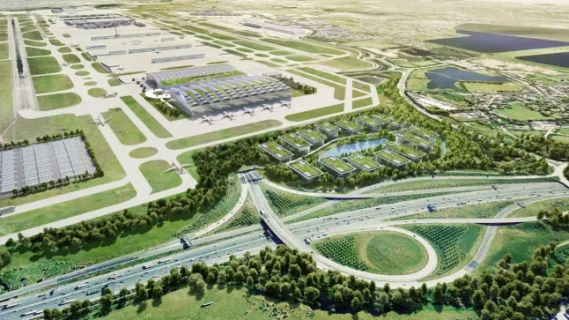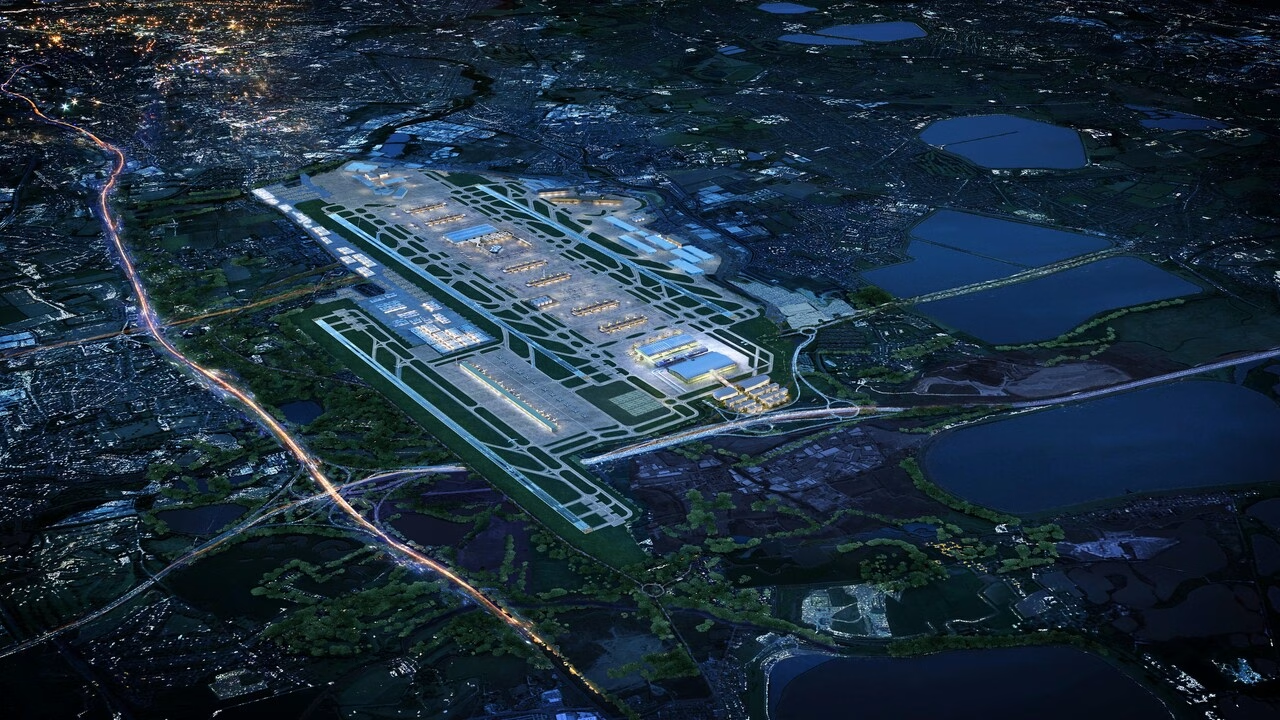The UK government officially selected Heathrow Airport’s US $64 billion expansion plan as the basis for future development. The decision ends a long period of uncertainty over the airport’s future capacity and is part of a broader push by the government to strengthen the UK’s global connectivity, trade and transport infrastructure under its “Plan for Change.” The chosen plan, submitted by Heathrow Airport Limited (HAL), was selected over a cheaper rival plan from Arora Group. The government deemed Heathrow’s plan as the “most credible and deliverable option,” particularly in view of the aim to secure a development consent application within the current parliamentary term.
Importantly, selecting this plan does not yet mean final approval. The government will conduct a full review of the Airports National Policy Statement (ANPS) to ensure the expansion meets environmental, noise and air‑quality obligations consistent with the UK’s climate commitments. Under current timelines, planning consent is expected by 2029. The new runway will be operational by 2035.
Project Overview
Runway: A new 3,500‑metre north‑western runway, designed to accommodate aircraft of all sizes, forming a core part of the expansion’s capacity uplift.
Terminal & Airfield Upgrades: Construction of a new terminal complex west of the existing Terminal 5 (satellite terminal “T5X”), additional satellite terminal (“T5XN”), expansion of existing terminals, and a phased closure of older parts including Terminal 3.
Transport & Infrastructure: Rerouting a section of the London orbital motorway M25 motorway, including tunneling and bridge work, to make room for runway and terminal expansion.
Capacity Growth: Once completed, the airport expects to handle up to 756,000 flights annually and up to 150 million passengers, a significant increase from current capacity.
Private Financing: The project is 100% privately financed, meaning no direct taxpayer funding is planned for runway and airport expansion.
National Benefits: The expansion aims to boost connectivity, support trade and tourism, create tens of thousands of jobs, and contribute positively to the UK’s economic growth.

What Challenges are Faced
Despite government backing, the plan faces multiple hurdles. Because of environmental concerns, including emissions, air‑quality, and noise, the expansion must align with the UK’s climate and regulatory obligations. It will be evaluated during the ANPS review. Airlines and industry stakeholders have also voiced concern: given the project’s high costs, there is fear that charges (such as landing fees) may rise, which could translate to higher ticket prices for travellers.
Moreover, while the government selected Heathrow’s plan as the basis for expansion, approval for actual construction and design details still depends on planning consent, likely to be granted by 2029. Finally, critics argue that expansion may undermine the UK’s environmental goals, including its commitments to reduce carbon emissions and meet climate‑change targets.
UK Connectivity, Economy & Global Aviation
If implemented, Heathrow’s expansion could reshape the UK’s aviation infrastructure and global connectivity. The new runway and enhanced terminals will facilitate more direct long‑haul flights, increasing passenger throughput and boosting capacity for both business and leisure travel. For airlines and freight operators, expanded capacity could unlock new routes, increase flexibility, and reduce congestion at Europe’s busiest hub, complementing other major UK airport developments such as Gatwick’s recently approved $2.2 billion second runway plan.
For the UK economy, improved connectivity could stimulate trade, tourism, and investment. With expected job creation and expanded transport infrastructure, the project aligns with the government’s broader vision for economic growth and national competitiveness. At the same time, the expansion underscores the challenge of balancing growth and environmental responsibilities, a test of whether large‑scale infrastructure projects can proceed responsibly amid climate imperatives.

